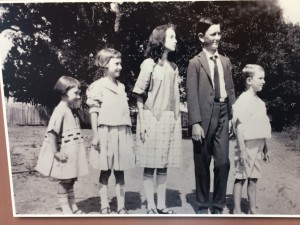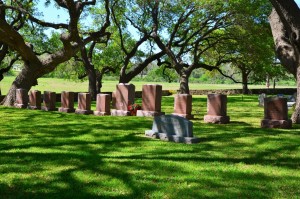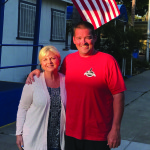Our group of a dozen is standing in the bedroom of Lyndon Baines Johnson, preserved exactly as it was at the moment of his death in 1973. The park ranger is telling us about the 36th president’s last moments of life.
“He was laying in the bed and felt a sharp pain in his chest,” he says. “He picked up the phone and called the Secret Service in a nearby compound and said, ‘Boys, I think you’d better get in here.’ When they arrived, the president was dead.’”
“Where exactly did he die?” asks one of the visitors.
“Right here,” says the ranger, pointing to my shoes.
I am but a few inches from the head of Johnson’s bed where the Secret Service found the president crumpled on the floor, still clutching the phone.
It was Jan. 22, 1973, four years and two days after Johnson left the Washington While House to retire to what became known as the Texas White House. The LBJ Ranch, near Stonewall, Texas (63 miles west of Austin) is now just one feature of the Lyndon B. Johnson National Historic Park.

The park consists of two districts: the Johnson City District, which includes historic homes, barns and stores in and around the town that have ties to Johnson’s ancestors, who settled the area in the mid-1800s; and the LBJ Ranch District, which includes the ranch house (opened to the public in August 2008); the restored Lockheed JetStar that Johnson used during his vice-presidency and presidency; a mile-long airstrip; the tiny house where Johnson was born in 1908; the one-room schoolhouse where he learned to read at age 4; and the family cemetery, where the president, Lady Bird Johnson and several generations of Johnsons are buried under the shade of expansive, century-old oak trees.
Surveying the countryside, it’s not difficult to understand why Lyndon and Lady Bird Johnson loved this verdant, bucolic landscape. Known as Texas Hill Country, this portion of the state includes a swath of 25 counties, stretching a bit northeast and mostly southwest of Austin, the state capital. (Side note: It’s not a secret that this area of Texas is often politically referred to as “an island of blue in a sea of red.” The area’s liberal leanings extend as far back as the Civil War, when the Hill Country’s pro-Union, German immigrant population was opposed to Texas seceding from the Union.)
Regardless of your political preferences, a visit to the land of all-things-LBJ is a history-lesson-come-alive, and a reminder of how politics, our place in the world and technology has changed since the late 1960s.
A tour through the Johnson ranch house, rambling and relatively modest by today’s standards, tells us that LBJ was an early adopter of technology of the times and understood the power of the media. There are sets of three televisions in many rooms (there were only three networks in the mid-1960s) and phones everywhere, including next to his place at the dining room table. A tireless worker, Johnson constantly worked the phones and never failed to take advantage of a moment that could be used to persuade a colleague on a vote.
With his long career in both state and national politics prior to becoming vice president and president, Johnson knew where all the skeletons were buried, say historians, and didn’t hesitate to use the information when beneficial.
The tour through the Texas White House puts visitors in touch with the man, with all his strengths and foibles. It was his time as a teacher working with destitute Mexican-American children in 1928 and 1929 that formed his political views and the desire to help the poor and uneducated. But LBJ wasn’t beyond using a few political dirty tricks to reach his legislative goals; he was a political animal to the core.
He was also a trickster.
Johnson owned an amphibious car and likes to freak out his guests by driving into the Pedernales River, which runs alongside the ranch property.
Most scholars agree that the assassination of President John Kennedy and the turmoil of the Johnson presidency weighed heavily on LBJ, making him seem older than his years. It was startling to be reminded that he was only 64 when he succumbed to a heart attack.





